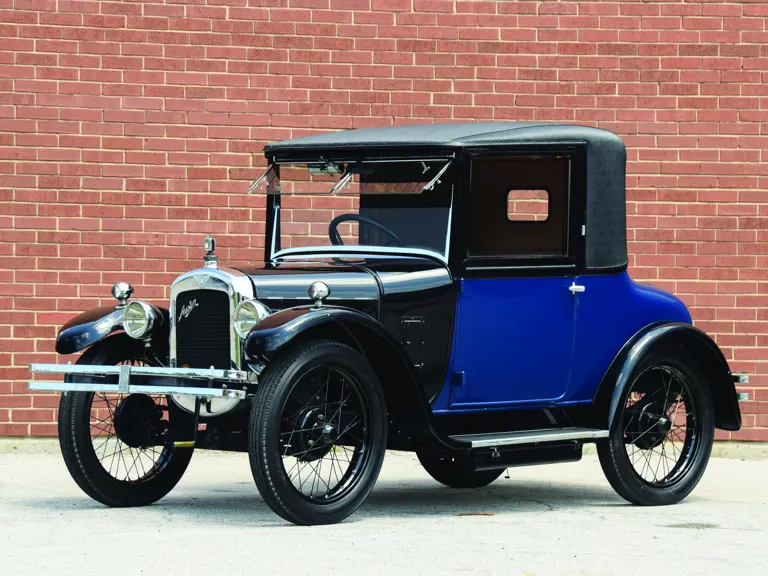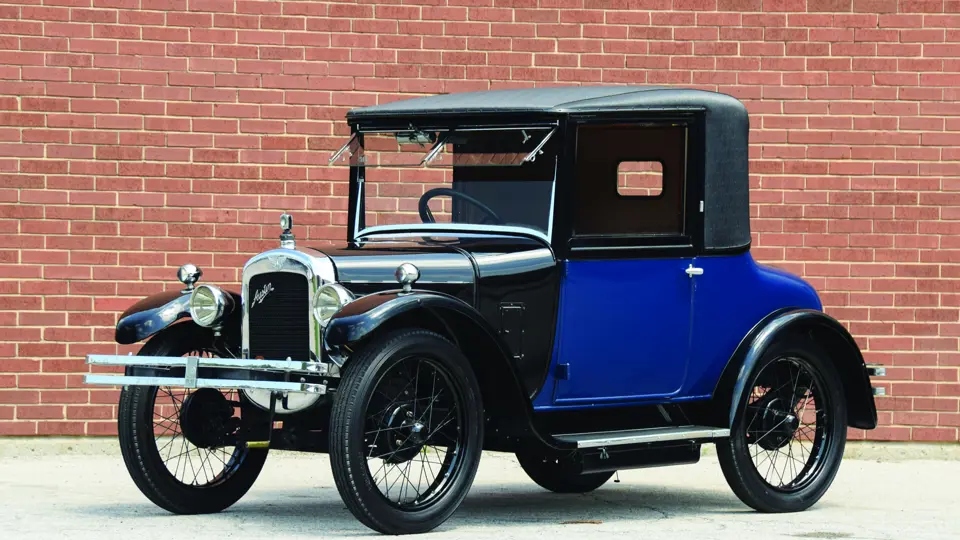Much like the Ford Model T that put America on wheels, the tiny, 75-inch wheelbase Austin Seven was Britain’s first true People’s Car. Decades before the Austin Mini, the simple, compact and cheap Austin Seven was a car that managed to appeal to buyers from a wide range of social and economic standings. The standard Seven was affordable and popular with those in the working class yet many a custom-bodied Sevens were built for those of a higher social rank. In the years after World War II, many Austin Seven specials were built for racing, cars that formed the roots of famous marques such as Lotus and McLaren. Even before the war, the Austin Seven was a key element in the foundation of Jaguar – as Sir William Lyons and William Walmsley worked together at Swallow Sidecar, making motorbike sidecars and lovely coachbuilt Austin Seven bodies. Other coachbuilders got in on the act as well, including Maythorn and Sons, who built just a handful of the handsome little coupes as featured here.
This delightful little 1927 Austin Seven, chassis number 36828, wears its original Maythorn and Sons Coupe body which was (rather unusually) built for an American customer. And it was not just any American customer who first took delivery of this very special Austin; according to previous owners, it is believed that the Pulitzer family of New York publishing fame originally purchased the car for use at their home in West Palm Beach, Florida. In 1935, the car was sold by the Pulitzers to J.C. Ohmer, also of West Palm Beach. Mr. Ohmer enjoyed the car through next decade when in 1947, a minor engine fire caused it to be laid up. The little Seven remained in storage until 1969 when it was purchased by yet another West Palm Beach resident, Mrs. Marjorie Greene.
The story of this fascinating little Austin was passed from Mr. Ohmer to Mrs. Greene who, with the help of her son, restored the car to its former elegant glory. With the restoration taking 20-years, it was carefully and painstakingly restored to correct specification with a rich, dark blue body with black fenders and a black bonnet and scuttle. Correct Elephant Motor Company bumpers are fitted, as is an Austin moto meter-style radiator cap. The fabric roof, dickie seat and rear mounted spare wheel give this car a handsome and formal appearance. The quality of the restoration is excellent and this has clearly been cherished and very well maintained, but also thoroughly enjoyed since its completion. Some light patina and light care-wear is apparent in the cabin, where correct Bedford Cord upholstery presents in good order. The wood dash panel is pleasantly detailed and shows with a very slightly patinated finish. Under hood detailing is largely correct on the 747-cc inline four-cylinder engine, with light cosmetic wear that is appropriate for an older restoration. Thanks to its rarity and outstanding history, it is still very much a showable car, but it is also one that has been lovingly broken-in by passionate prior owners.
Mrs. Greene enthusiastically showed her Austin all over Florida through the 1990s, which included an entry in the 1996 Amelia Island Concours d’Elegance. She would usually appear in her pride and joy wearing an Austin badge necklace and spark plug earrings and even made an appearance in a 1999 issue of British Driver magazine. The extensive file that accompanies this car includes many photos of Mrs. Greene with her beloved Austin.
Having had only four owners in 88-years, this Austin is now ready to find its next keeper to carry on its wonderful story. An extensive history file, that includes a hand-written bill of sale from Mr. Ohmer to Mrs. Greene in 1969, as well as recent receipts showing it’s recommissioning, will be included in the sale. Also included are original tools and a logbook documenting J.C. Ohmer’s maintenance from 1935-1938. Fascinating history, undeniable charm, and pleasing condition give this miniscule motorcar a huge presence.



 | Auburn, Indiana
| Auburn, Indiana


